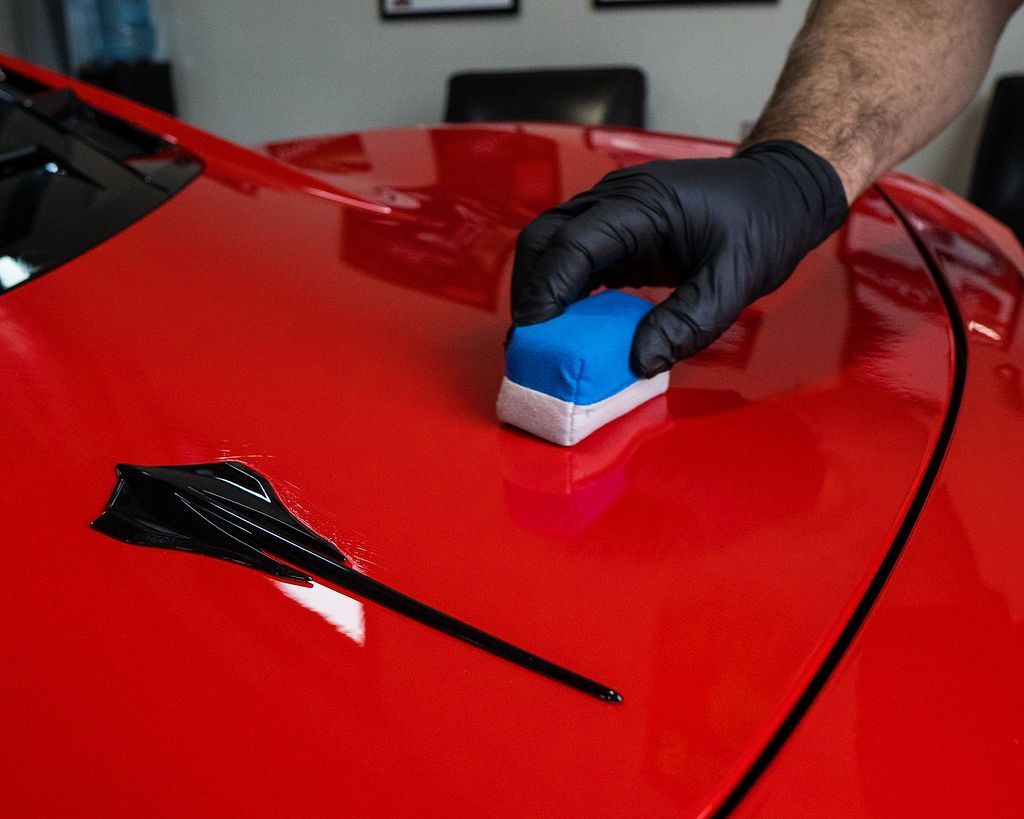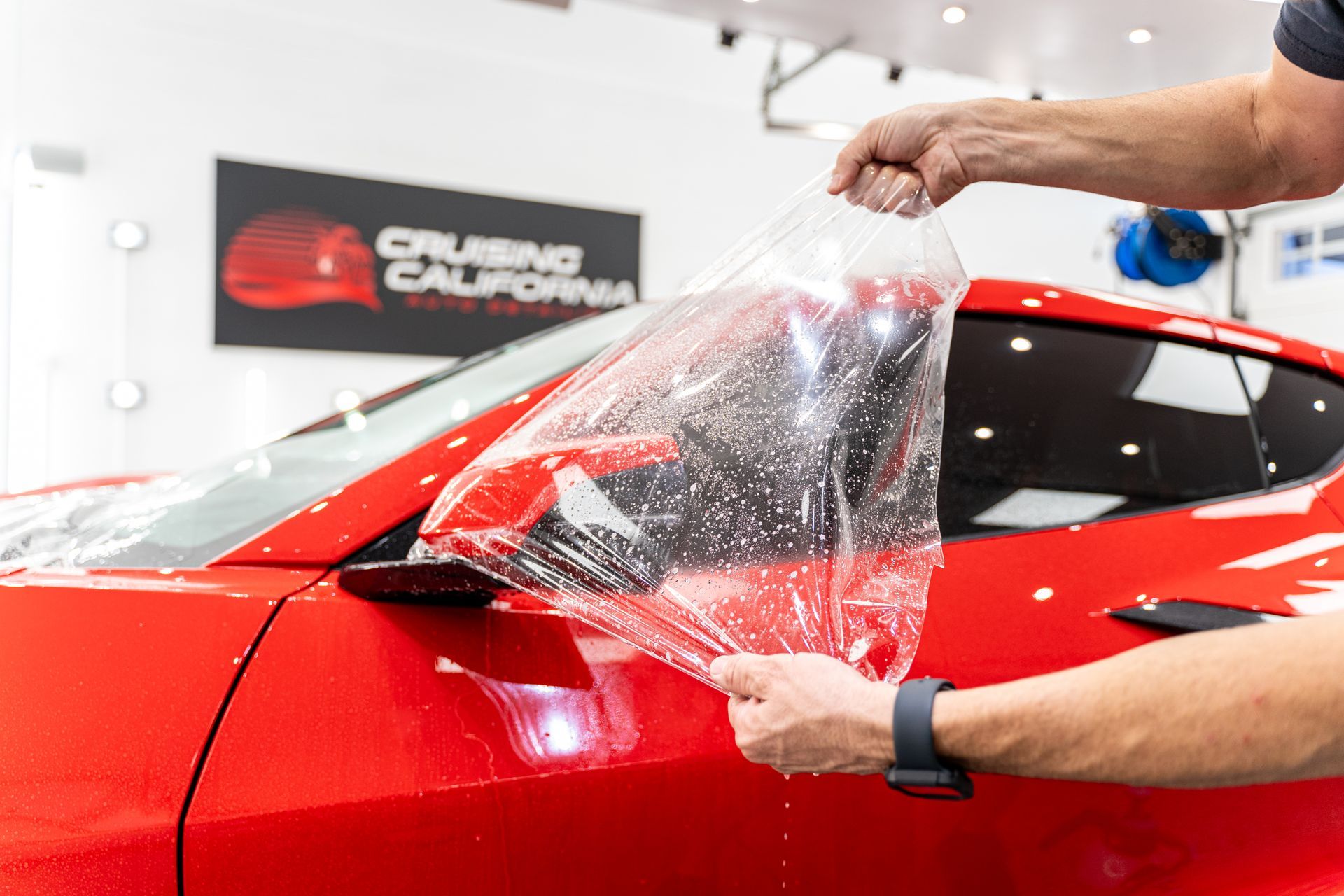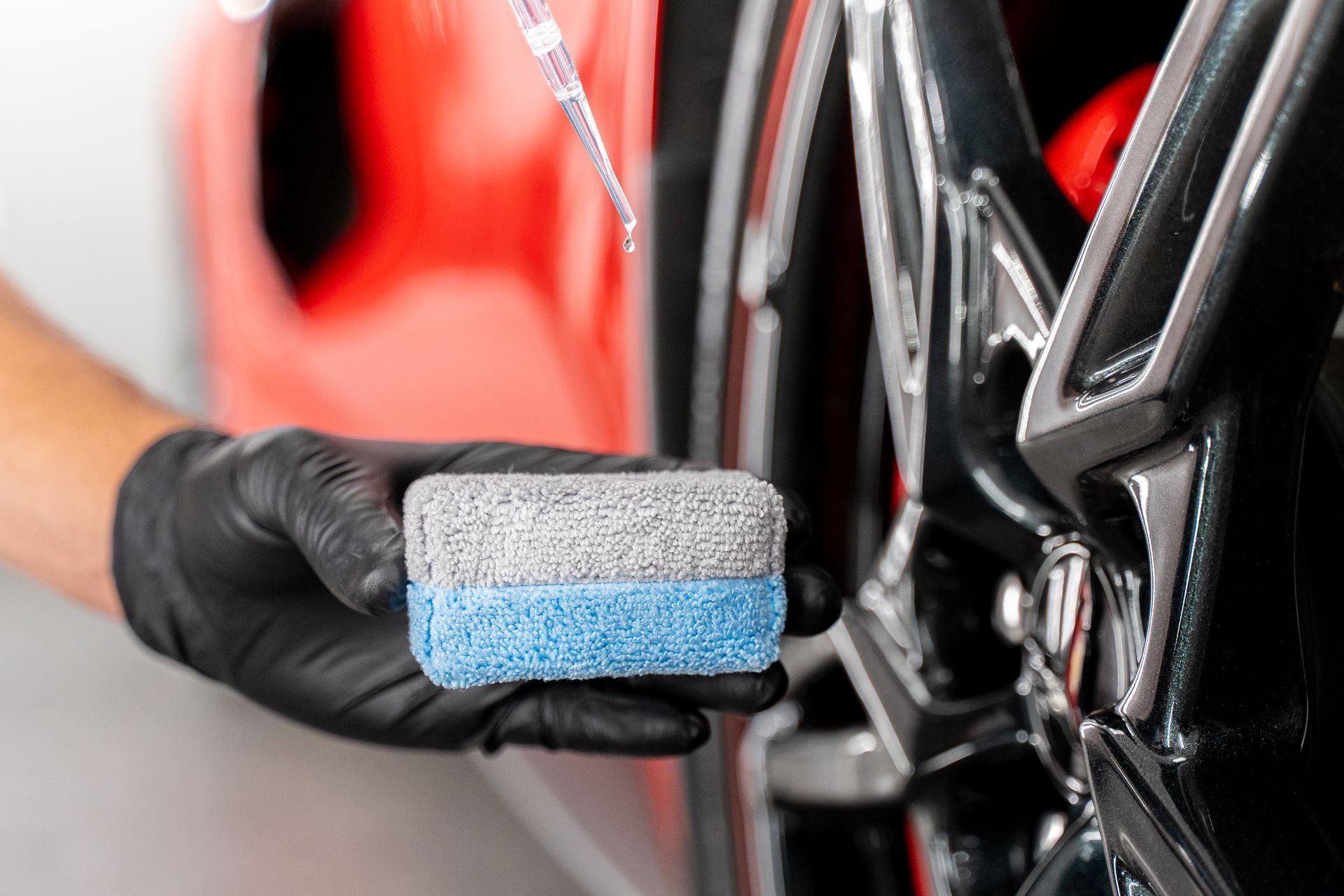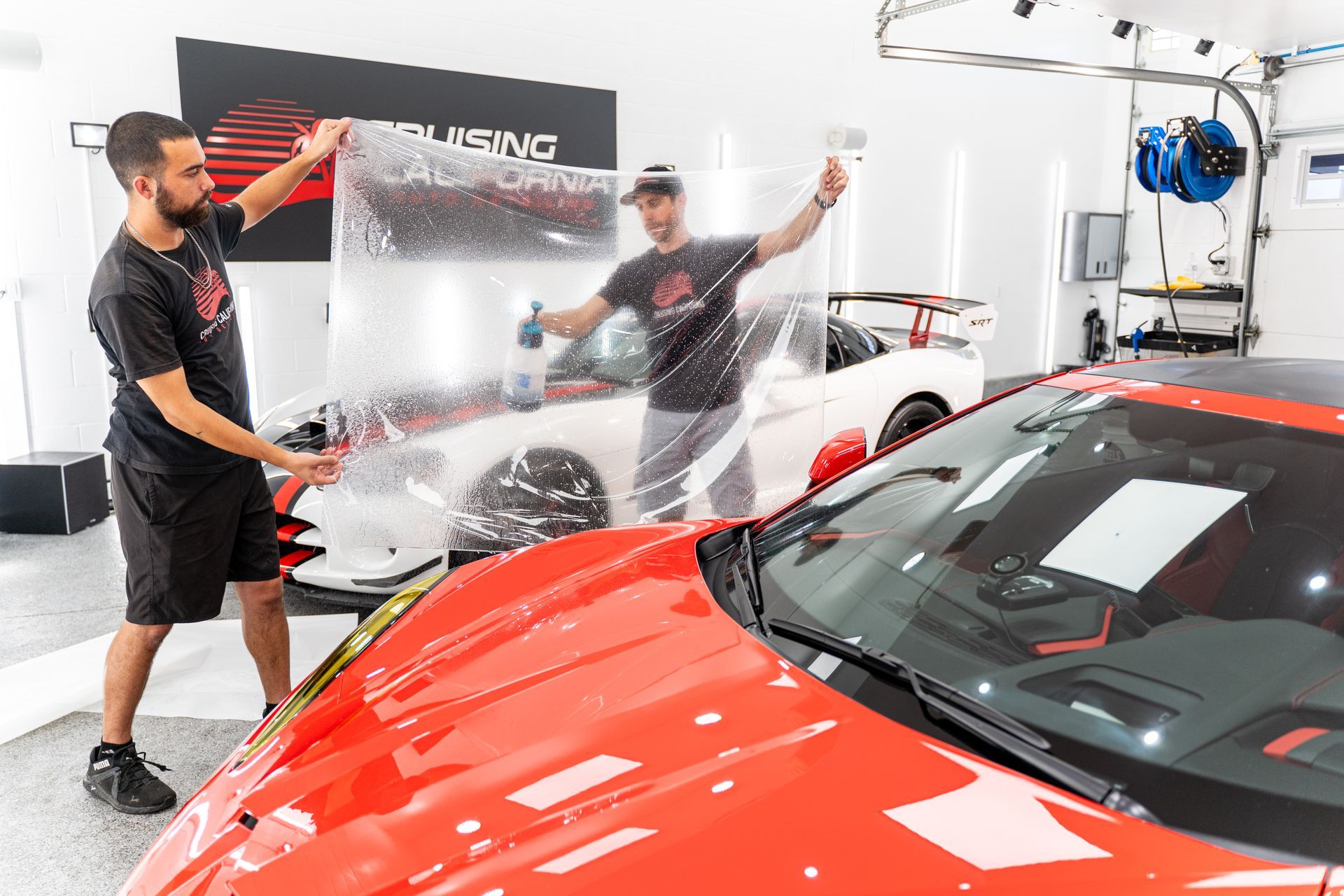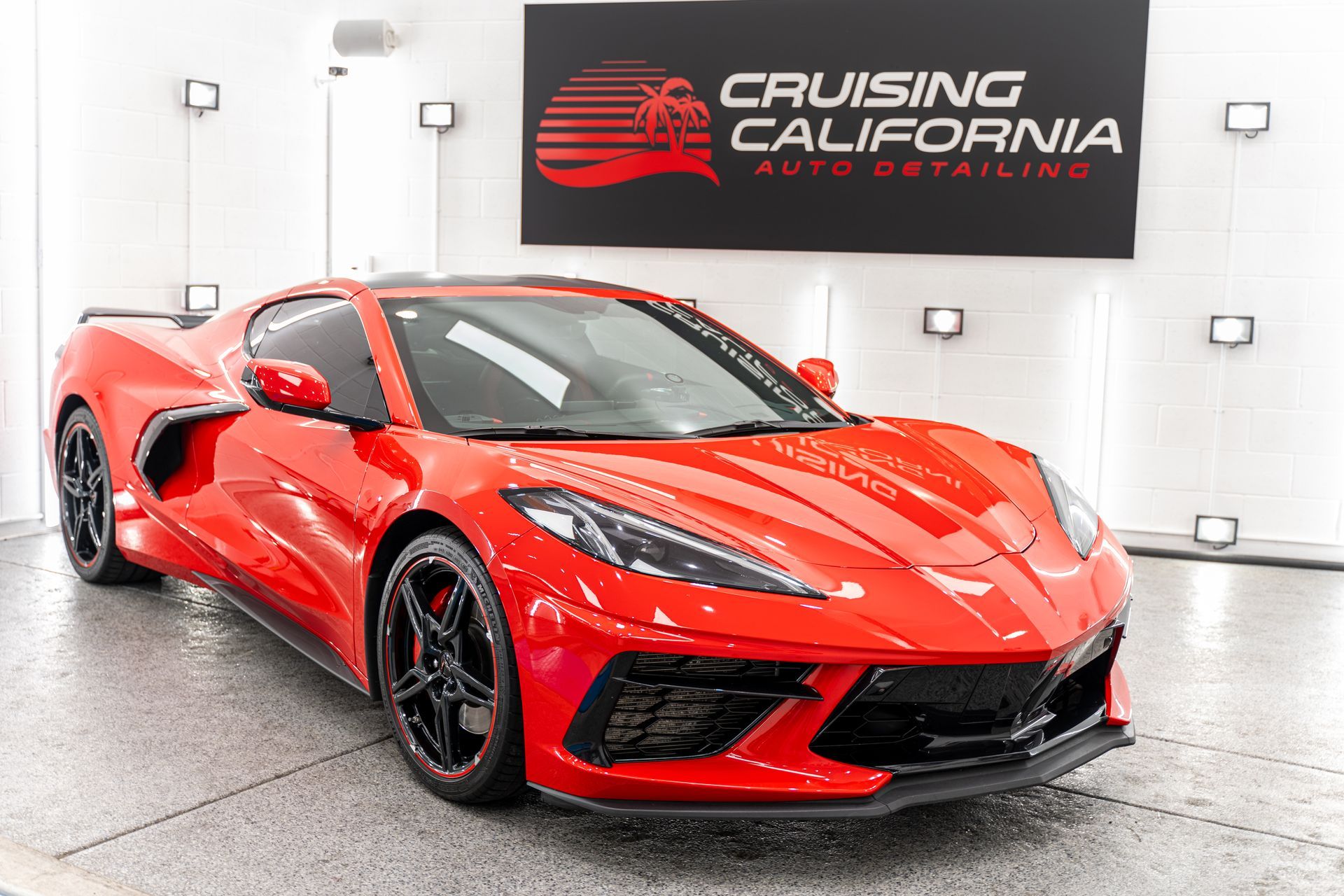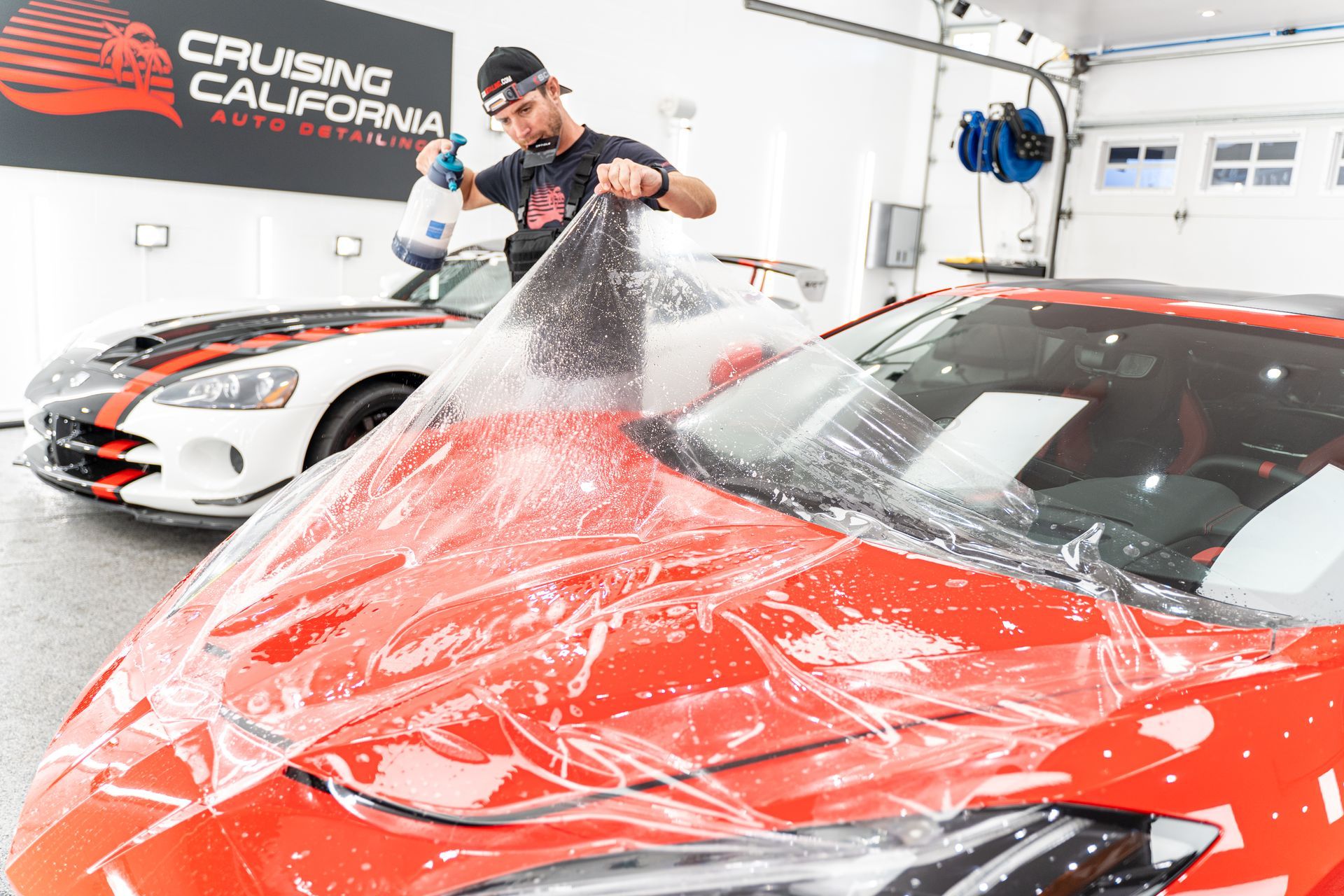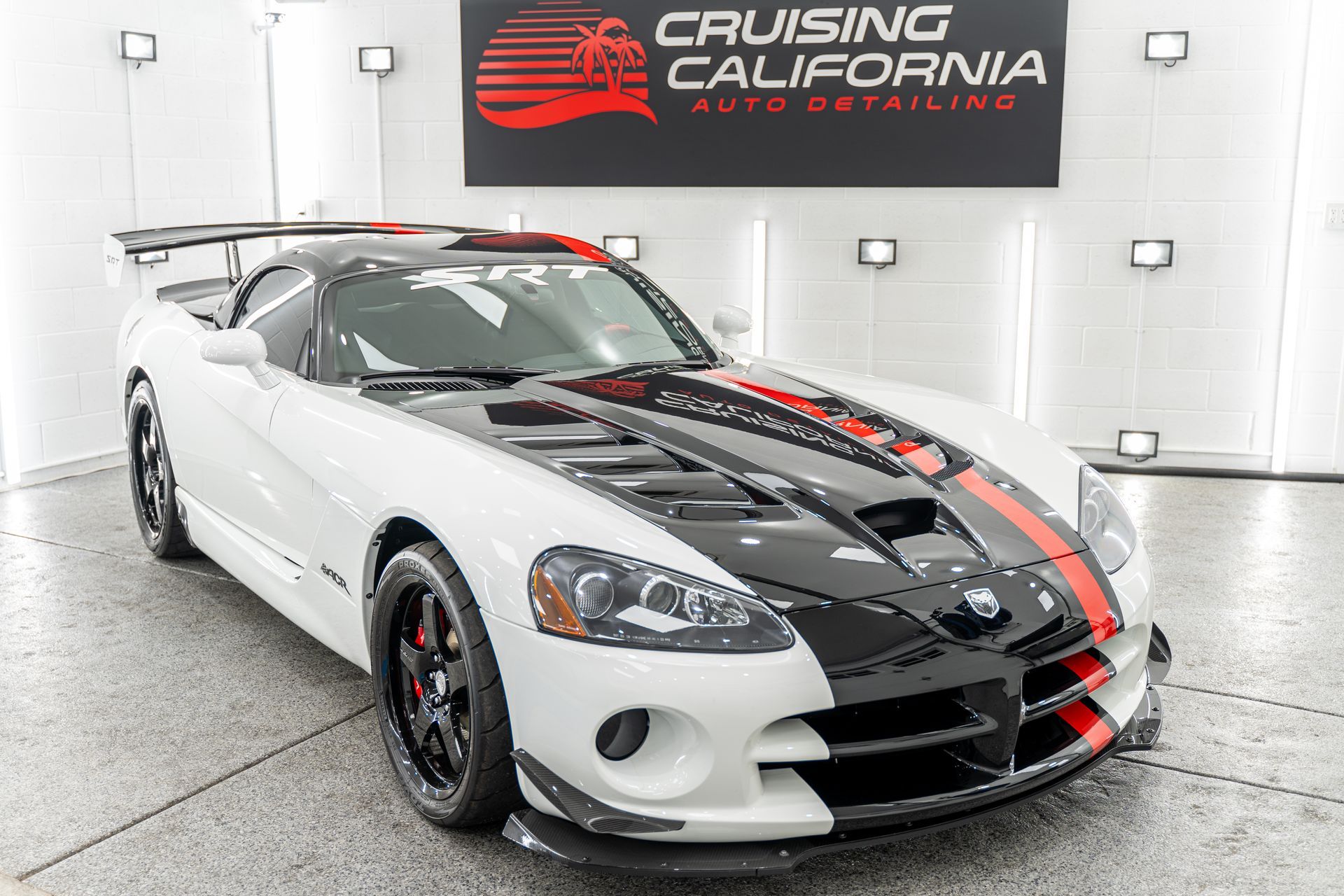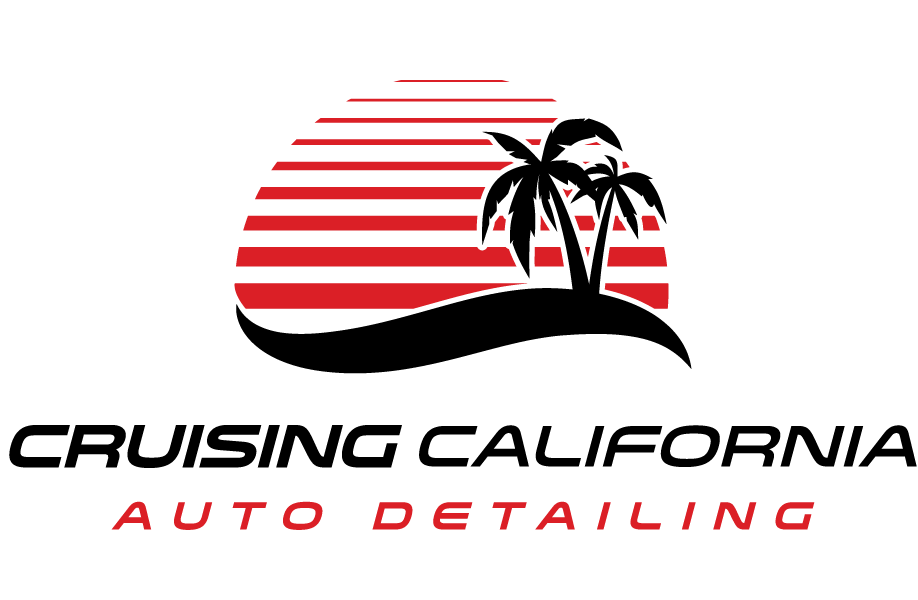Investing in professional ceramic coating is like giving your car an invisible suit of armor. It shields the paint and retains the new-like gloss, keeping the car looking its best for years. Not only does it combat harsh UV rays and contaminants that cause oxidation, but it also reduces the time and money spent on frequent car maintenance. Thus enhancing your vehicle’s overall lifespan and preserving its resale value. So next time you see water beads rolling off a shiny car, know that beneath that gloss is possibly a layer of tough ceramic protection.
Opting for professional ceramic coating provides long-term protection against environmental contaminants, reduces the need for frequent washing, and enhances the durability and aesthetic appeal of your vehicle's paint. This investment not only saves time and effort in maintenance but also contributes to the overall long-term value of your car.
The Perks of Professional Ceramic Coating
Professional ceramic coating surpasses mere aesthetics and dives into enriching the overall protection of your vehicle, acting as a shield meticulously crafted to defend your car against damaging forces like UV rays, water spots, bird droppings, and other harmful pollutants. This renowned protective layer is designed to offer an impressive array of benefits, elevating your vehicle's maintenance, appearance, and long-term value.
Let's delve deeper into these perks so you can truly grasp the magnitude of the advantages ceramic coatings provide. Primarily, this advanced protection shields your vehicle's paintwork from the debilitating effects of UV rays, ensuring that the vibrant color and glossy finish of your car remain intact for longer periods of time. For instance, consider how your vehicle's exterior is constantly exposed to sunlight. UV rays cause the paint to fade over time. Professional ceramic coatings significantly reduce this effect, providing up to 90% protection against UV damage compared to traditional waxing methods. This means fewer trips to the detailing shop for paint corrections and possibly costly repaints.
The environmental hazards don't end with just UV rays; water spots and bird droppings can also wreak havoc on your car's exterior. But fear not! Ceramic coating acts as a barrier, repelling water and inhibiting the harmful effects of water spot etching and acidic contamination caused by bird droppings. Consider a scenario where you park under a tree and birds leave their droppings on your car. With a ceramic coating in place, cleaning becomes notably easier. Plus, the likelihood of permanent damage decreases significantly due to the protective layer acting as a buffer between your car's paint and potential contaminants.
This protective layer also contributes to minimizing maintenance requirements: reducing the frequency of car washes and detailing appointments. You're not just saving valuable time but also sparing yourself from shelling out cash for frequent touch-ups and treatments. Think of ceramic coatings as a resilient shield that stands guard against environmental adversaries, giving you peace of mind knowing that your vehicle is safeguarded from various damaging elements. Some might argue that the initial investment in professional ceramic coating may seem hefty, but when you consider the prolonged protection it provides against premature aging, corrosion, and paint damages—alongside reduced maintenance expenses—the long-term value it offers is indisputable.
As you can see, professional ceramic coating transcends mere gloss and shine by offering comprehensive protection against environmental threats while simultaneously cutting down on maintenance needs and expenses.
Protection for Paintwork and Vehicle Lifespan
Your car is a valuable investment, and protecting its exterior is vital to ensuring its longevity. Professional ceramic coating offers an impactful layer of defense, safeguarding your vehicle's paint from the damaging effects of daily exposure to the elements. This innovative shield acts as a barrier against a range of potential threats, including oxidative damage, UV rays, chemical contaminants, and other environmental contaminants. By significantly reducing these risks, ceramic coating not only preserves the aesthetics of your car but also plays a pivotal role in prolonging its lifespan.
Oxidation is a natural process that occurs when metal comes into contact with oxygen, causing irreversible damage to the paintwork. Ceramic coating creates a semi-permanent hydrophobic layer on the surface that acts as a powerful deterrent against oxidation by preventing moisture and oxygen from reaching the underlying paint. This preventative measure substantially mitigates the risk of rust formation and maintains the structural integrity of your vehicle's exterior. Additionally, the harsh impact of UV rays can cause significant harm to automotive paint. Prolonged exposure can lead to color fading, dullness, and gradual degradation of the clear coat. However, professional ceramic coatings provide up to a remarkable 50% improvement in resistance to UV damage, effectively shielding the paint from premature aging and deterioration due to sun exposure. By harnessing this protective shield against UV rays, ceramic coating significantly contributes to preserving the factory-fresh finish of your car's exterior.
In addition to shielding against elemental hazards, ceramic coatings are adept at combating chemical contaminants such as bird droppings, tree sap, insect residues, and water etching. These substances are notorious for causing unsightly blemishes on automotive surfaces and can penetrate traditional paint protection methods. With a professional ceramic coating in place, these contaminants encounter significant resistance and find it much more challenging to adhere to or cause lasting damage to the paintwork. Imagine driving your car through various environments—whether it's a dusty rural road or an urban area with pollution from traffic—where environmental pollutants are bound to settle on your vehicle. Ceramic coatings are designed as an effective defense mechanism against such accumulation by creating a hydrophobic surface that repels dirt and grime. This means fewer frequent cleaning sessions for you while maintaining your car's polished appearance over an extended period of time.
By investing in professional ceramic coating, you're not only enhancing the visual appeal and protective capacity of your vehicle but also contributing to its long-term durability. The substantial reduction in paint damage from environmental contaminants paired with enhanced resistance against UV damage presents a compelling case for leveraging this advanced protective solution to safeguard your car's exterior from wear and tear.
Quality of Application: Expertise Over DIY
When it comes to giving your car the best care possible, there's no substitute for experience and expertise. The application of a ceramic coating requires precision and knowledge—qualities that professional technicians bring to the table. To ensure durability and effectiveness, every step of the coating process must be meticulously executed. This level of precision is difficult to achieve with DIY methods. Professional technicians have undergone thorough training to master the art of applying ceramic coatings, which involves a comprehensive understanding of paintwork and specialized tools. Imagine trying to paint your favorite picture at home without any artistic skill, versus having a trained artist expertly bring your vision to life. Just as in art, the expertise and steady hands of a professional make a world of difference in achieving the best outcome.
Moreover, these experts are equipped with the necessary tools and equipment specifically designed for applying ceramic coatings. From precise applications to controlled environments, they have access to resources that amateur enthusiasts simply do not have. By entrusting your car to a professional, you can rest assured that each square inch will be uniformly coated. This ensures maximum adhesion and full coverage, providing a consistent level of protection across the entire vehicle. Additionally, professionals understand how to address specific challenges that may arise during the application process. Whether it's environmental factors or variations in vehicle surfaces, they possess the knowledge and strategies to navigate these complexities effectively.
Remember that while DIY projects can be rewarding in various aspects, applying a long-lasting ceramic coating to your car is a different terrain altogether. So, whether it's ensuring even coverage or maneuvering through potential obstacles, professional expertise clearly makes a substantial difference when it comes to the application of ceramic coatings on your car.
Cost vs. Benefits of Ceramic Coating
Let's talk about the elephant in the room—cost. We all know that professional ceramic coating can be quite an investment. It's pretty normal for people to hesitate at the thought of spending a significant amount upfront, especially when DIY ceramic coating materials and supplies are available for a fraction of the cost. But if we look beyond the initial expense and dive into the long-term benefits, professional ceramic coating starts to clearly present itself as a worthy investment. When weighing out the costs and benefits, consider the fact that a professionally applied ceramic coating offers prolonged protection compared to self-application. This means your vehicle will retain its glossy finish and be safeguarded against environmental factors for a longer time. In contrast, a DIY application may not hold up as well over the years, requiring more frequent reapplication and ultimately leading to higher costs in the long run.
Professional ceramic coating is like investing in high-quality furniture that lasts for decades, whereas DIY coating is like buying inexpensive furniture that requires periodic replacements. Each option involves an upfront expenditure, but one proves far more economical in the long haul. Moreover, the reduced need for frequent maintenance can save you both time and money. A professionally coated vehicle becomes easier to clean and maintain due to its hydrophobic properties. This translates to fewer trips to professional detailing services and lower expenses on cleaning products over time. It’s also essential to address one of the most compelling benefits—enhanced aesthetics. A vehicle that undergoes professional ceramic coating not only retains its showroom shine for an extended period but also increases in value due to its preserved appearance. Investing in professional ceramic coating contributes significantly to maintaining your vehicle's overall aesthetic appeal and resale value over time.
By understanding the long-term advantages associated with professional ceramic coating, it becomes evident that this investment goes beyond surface-level improvements. The substantial protection, diminished maintenance needs, and elevated aesthetics make professional ceramic coating an invaluable choice for those seeking lasting value for their vehicles.
Durability and Long-Lasting Shine of Ceramic Coating
A professional ceramic coating offers more than the temporary allure of waxing and detailing methods. When your car is coated with ceramic, a strong chemical bond forms with the paintwork, creating a protective layer against exposure to external elements like UV rays, dirt, and other environmental contaminants. This superior protection results in a long-lasting shine that surpasses traditional methods. The reduction in polishing and waxing sessions required to maintain your car's appearance saves you both time and effort in the long run. Imagine your car retaining its glossy finish year after year without the need for frequent touch-ups or reapplications. This durability aspect translates to an enhanced appearance that endures through time and aids in preserving the pristine look of your vehicle.
In addition to upholding the stunning shine of your car, the durable nature of ceramic coatings ensures that the paintwork remains unharmed by environmental factors such as bird droppings or harsh weather conditions. Consider it as providing your car with a suit of armor that protects it from potential harm from common exposure. A professional ceramic coating serves as an investment that not only enhances the aesthetics but also provides long-term protection for your vehicle. The longevity and protection provided by professional ceramic coating certainly make a compelling case for safeguarding your vehicle's beauty and value.
Deciding if Ceramic Coating is Right for Your Car
When considering if ceramic coating is the right choice for your car, it's crucial to evaluate a few key factors. Firstly, assess how frequently you use your vehicle. If you're someone who drives daily, especially in areas with harsh weather conditions or heavy pollution, ceramic coating might be a worthy investment for added protection against environmental contaminants. If maintaining a high-quality finish on your car is essential to you, then professional ceramic coating could be the answer. Its ability to retain that just-detailed look for an extended period can save you time and effort on frequent cleanings and detailing appointments.
Consider the long-term maintenance goals you have for your vehicle. If reducing the time spent on upkeep and retaining a showroom-quality shine are priorities for you, then professional ceramic coating is likely a beneficial investment. For instance, if you own a vintage or luxury car that you want to keep in top-notch condition, a ceramic coating can help maintain its value and pristine appearance over the years. Before making the decision, consulting with reputable automotive detailing professionals is essential. They can assess the specific needs of your vehicle and provide personalized recommendations based on your usage patterns and environmental exposure. It's highly recommended to seek guidance from knowledgeable industry experts who can offer valuable insights tailored to your vehicle's requirements if you're considering professional ceramic coating.
Assessing these factors will help determine if the ceramic coating aligns with your long-term maintenance goals and provides the protection and finish you desire for your vehicle. In the world of car care, understanding the specific needs of your vehicle and weighing the benefits of professional ceramic coating is key to ensuring a lasting shine and protection. Here's to making informed decisions about your car's well-being!
Trusted Professional Ceramic Coating Service in El Cajon, CA
Are you tired of seeing your car lose its shine after just a few washes? Look no further! CCA Detailing & Ceramic Coating | PPF is your
trusted solution for professional ceramic coating services in El Cajon, CA. Say goodbye to constant waxing and polishing, and hello to long-lasting protection and unmatched shine. Our team of experts is dedicated to providing top-notch service, ensuring your vehicle stays looking its best for years to come. Don't settle for anything less than perfection; schedule your appointment with us today and experience the difference firsthand! Call us at
(619) 916-6157!

